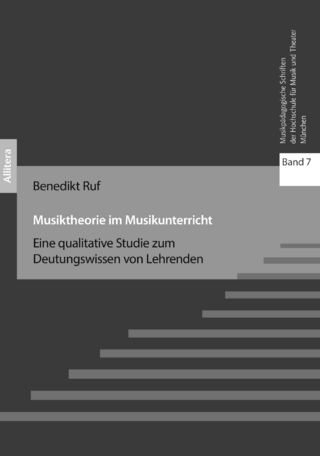
Fear of Music - Why People Get Rothko But Don`t Get Stockhausen
Seiten
2009
O Books (Verlag)
978-1-84694-179-5 (ISBN)
O Books (Verlag)
978-1-84694-179-5 (ISBN)
- Titel ist leider vergriffen;
keine Neuauflage - Artikel merken
Examines the parallel histories of modern art and modern music and examines why one is embraced and understood and the other ignored, derided or regarded with bewilderment, as noisy, random nonsense perpetrated by, and listened to by the inexplicably crazed.
Modern art is a mass phenomenon. The Tate Modern is the most popular tourist attraction in Europe. Conceptual artists like Tracy Emin and Damien Hirst enjoy celebrity status. Works by 20th century abstract artists like Mark Rothko are selling for record breaking sums at auction, while the millions commanded by works by Andy Warhol and Francis Bacon make headline news. However, while the general public has no trouble embracing avant garde and experimental art, there is, by contrast, mass resistance to avant garde and experimental music, although both were born at the same time under similar circumstances - and despite the fact that from Schoenberg and Kandinsky onwards, musicians and artists have made repeated efforts to establish a 'synaesthesia' between their two media.This book examines the parallel histories of modern art and modern music and examines why one is embraced and understood and the other ignored, derided or regarded with bewilderment, as noisy, random nonsense perpetrated by, and listened to by the inexplicably crazed.
It draws on interviews and often highly amusing anecdotal evidence in order to find answers to the question: Why do people get Rothko and not Stockhausen?
Modern art is a mass phenomenon. The Tate Modern is the most popular tourist attraction in Europe. Conceptual artists like Tracy Emin and Damien Hirst enjoy celebrity status. Works by 20th century abstract artists like Mark Rothko are selling for record breaking sums at auction, while the millions commanded by works by Andy Warhol and Francis Bacon make headline news. However, while the general public has no trouble embracing avant garde and experimental art, there is, by contrast, mass resistance to avant garde and experimental music, although both were born at the same time under similar circumstances - and despite the fact that from Schoenberg and Kandinsky onwards, musicians and artists have made repeated efforts to establish a 'synaesthesia' between their two media.This book examines the parallel histories of modern art and modern music and examines why one is embraced and understood and the other ignored, derided or regarded with bewilderment, as noisy, random nonsense perpetrated by, and listened to by the inexplicably crazed.
It draws on interviews and often highly amusing anecdotal evidence in order to find answers to the question: Why do people get Rothko and not Stockhausen?
David Stubbs is a freelance British music journalist and author. Between 2004 and 2006 he was reviews editor for The Wire, the UK based magazine dedicated to avant garde and experimental music of all genres. Between 1987 and 1988 he was staff writer at Melody Maker, before going on to join the staff of the NME. As well as music, he also covers sport, film, literature and TV - his work regularly appears in The Guardian, Arena, The Wire, Uncut and When Saturday Comes.
| Erscheint lt. Verlag | 24.4.2009 |
|---|---|
| Sprache | englisch |
| Maße | 142 x 217 mm |
| Gewicht | 176 g |
| Themenwelt | Kunst / Musik / Theater ► Musik ► Musiktheorie / Musiklehre |
| ISBN-10 | 1-84694-179-2 / 1846941792 |
| ISBN-13 | 978-1-84694-179-5 / 9781846941795 |
| Zustand | Neuware |
| Haben Sie eine Frage zum Produkt? |
Mehr entdecken
aus dem Bereich
aus dem Bereich
Grundbegriffe, Harmonik, Formen, Instrumente
Buch | Softcover (2021)
Philipp Reclam (Verlag)
CHF 12,90
Jazz als Gegenkultur im westlichen Nachkriegsdeutschland
Buch | Hardcover (2024)
edition text + kritik (Verlag)
CHF 57,90
eine qualitative Studie zum Deutungswissen von Lehrenden
Buch | Softcover (2024)
Allitera Verlag
CHF 49,95


